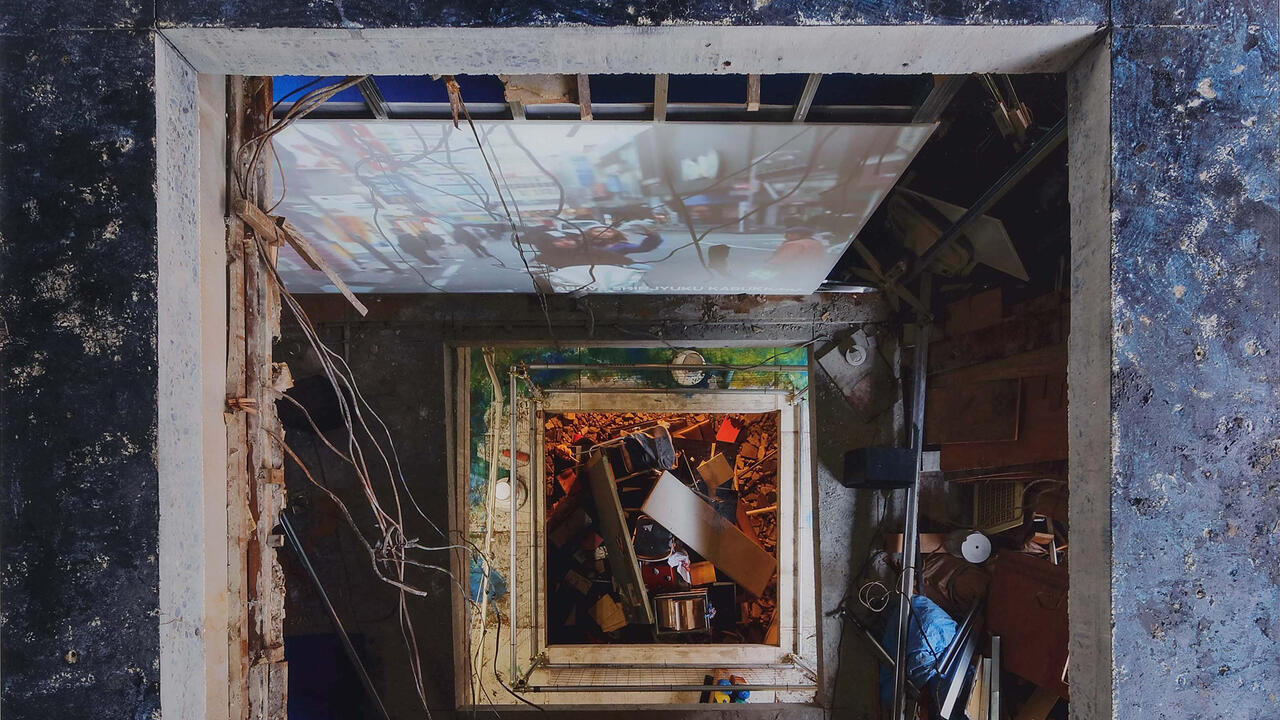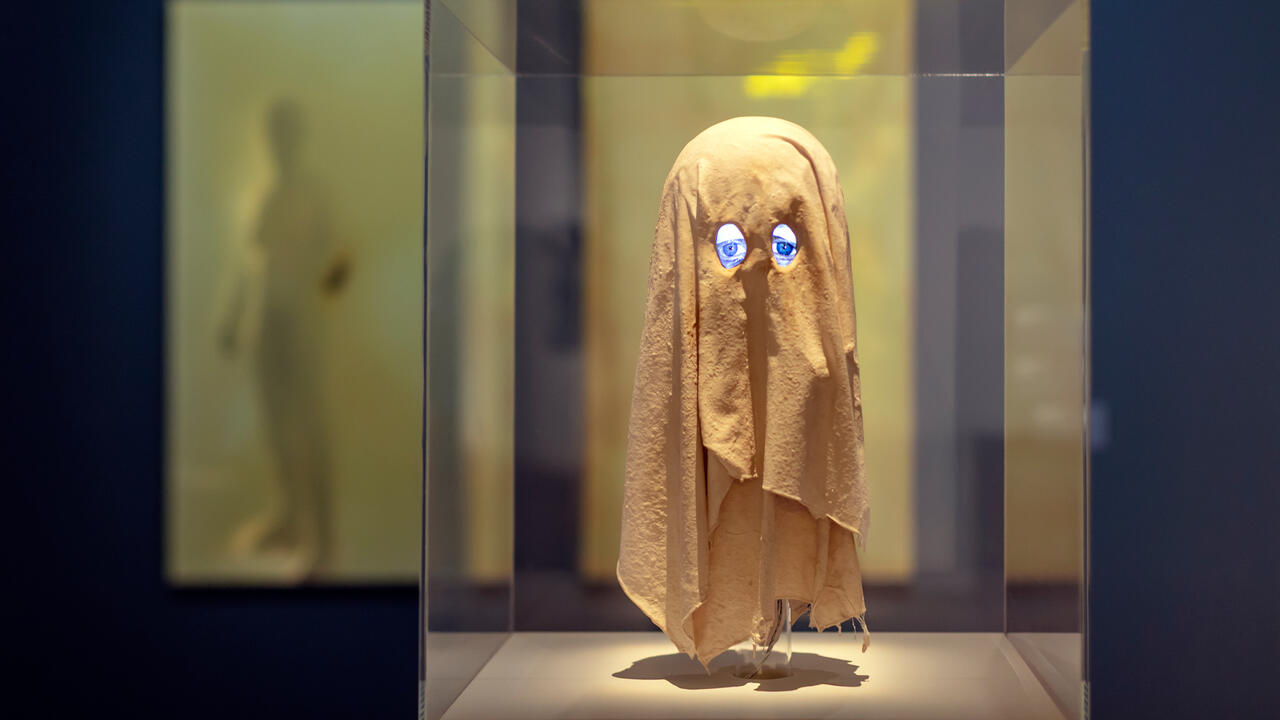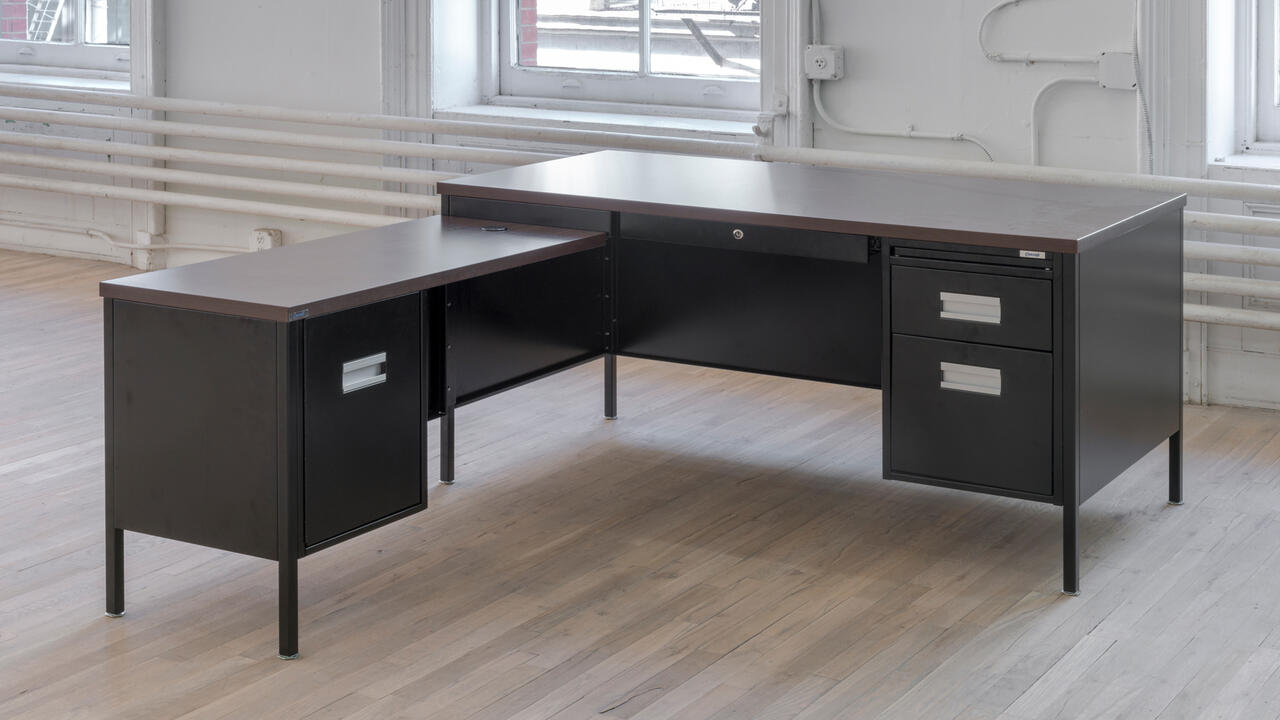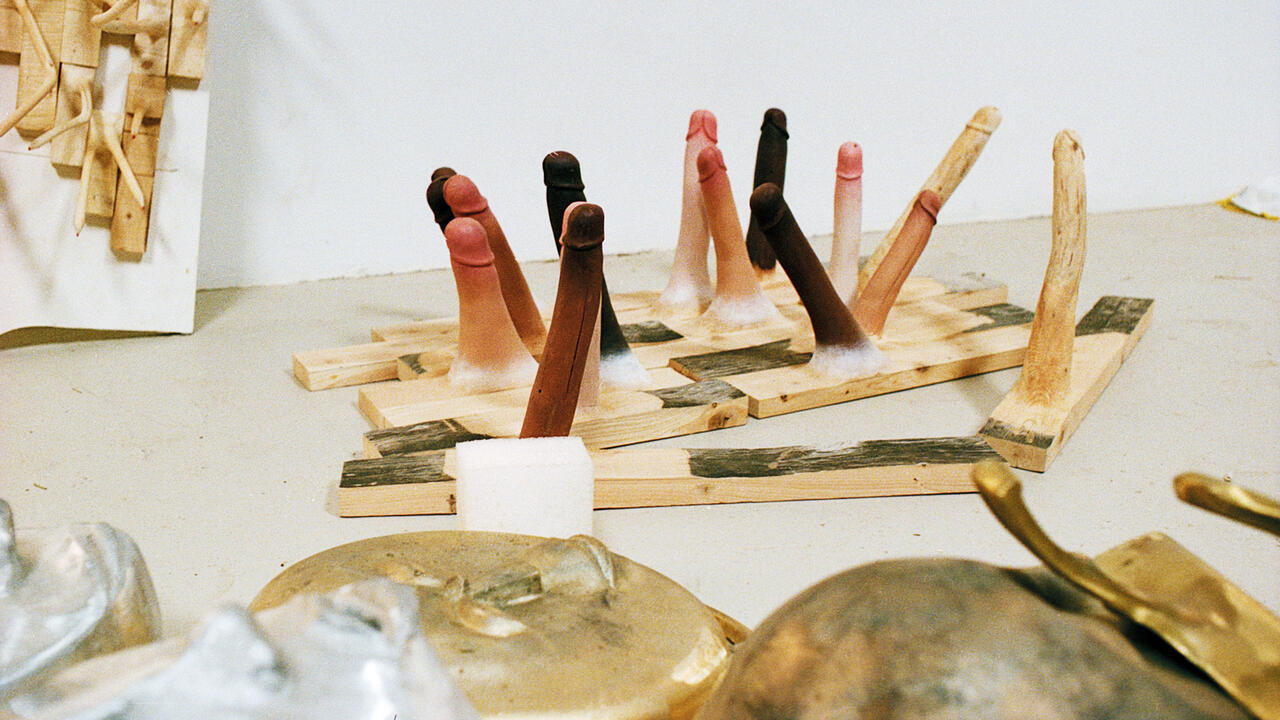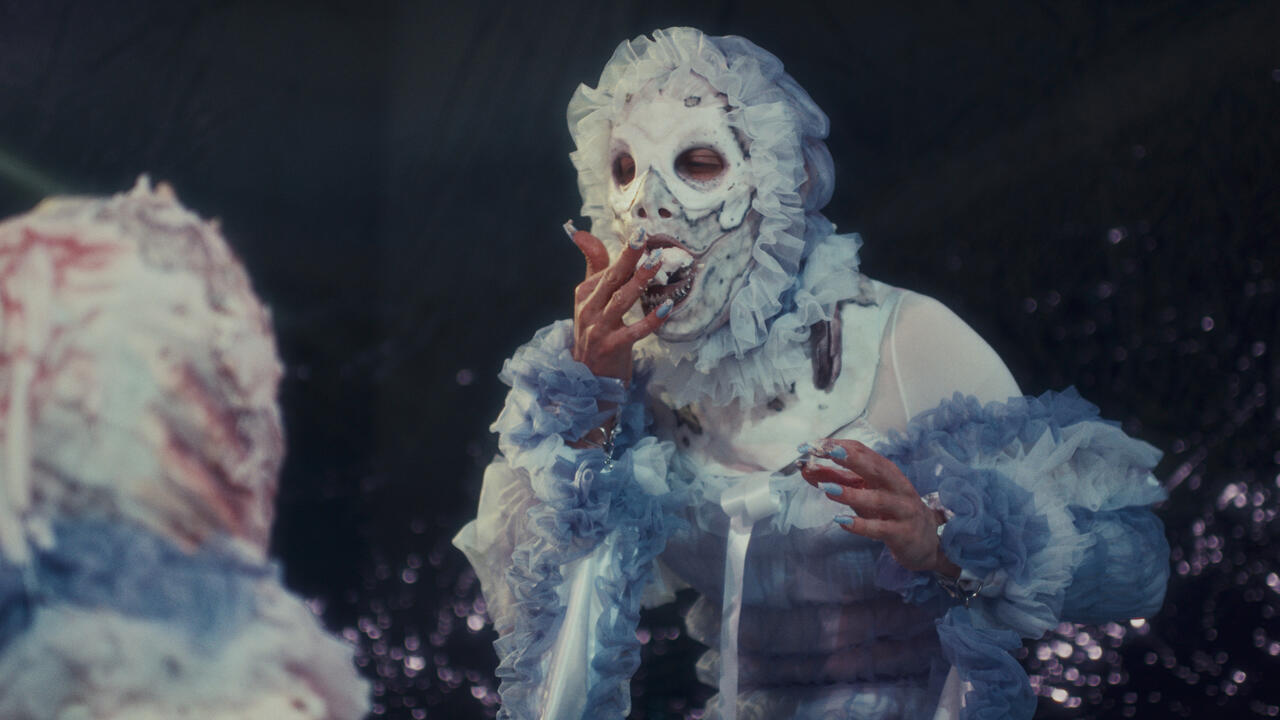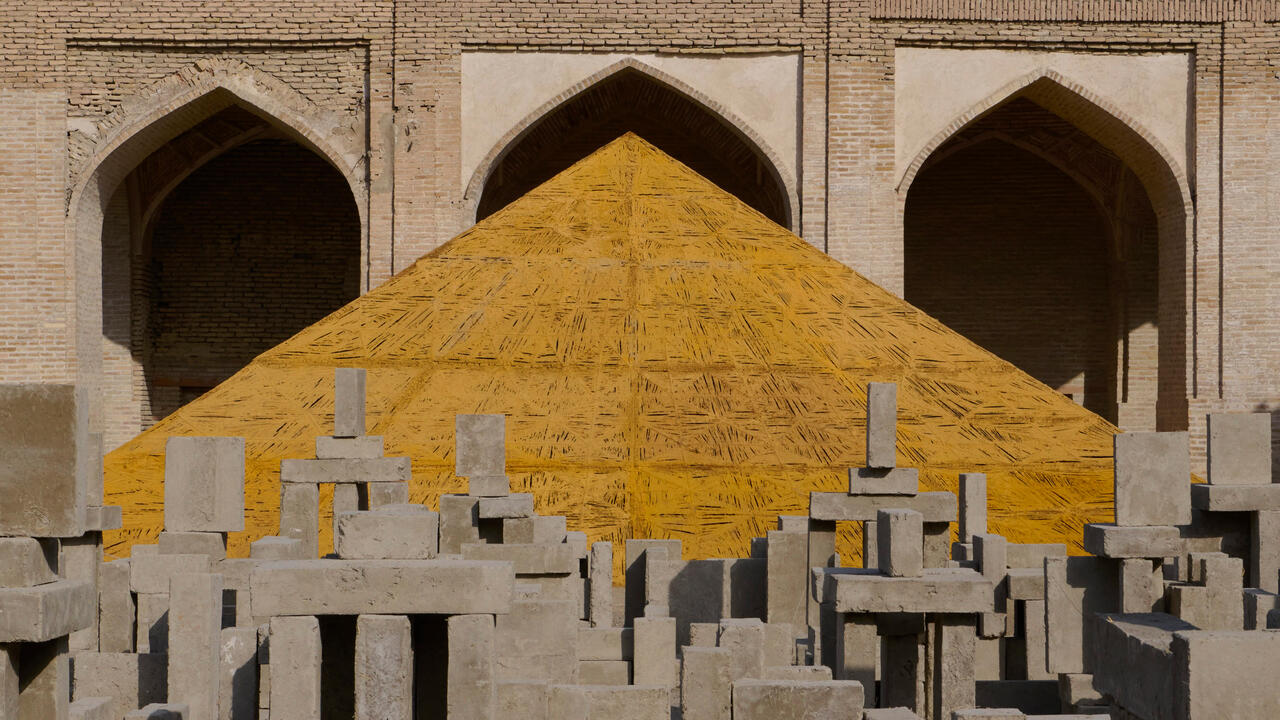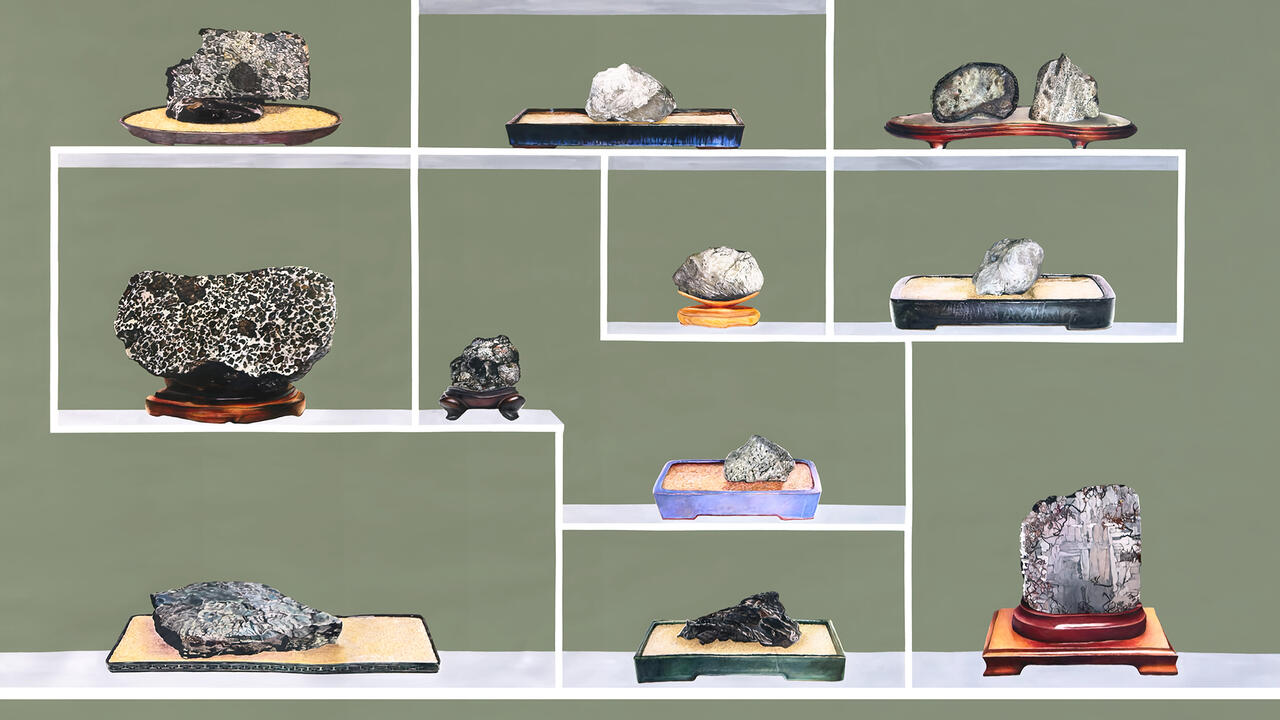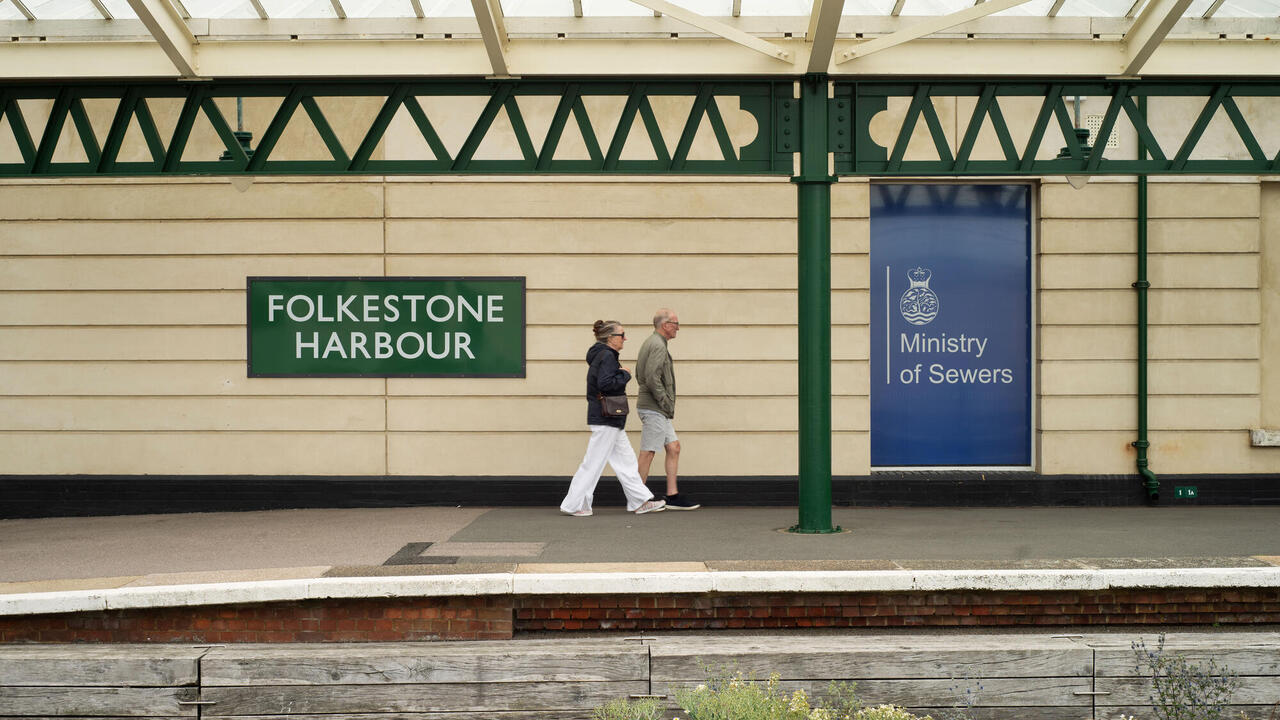Critic's Guide: London
The first of a new series that sees regular frieze contributors choose the best current exhibitions from their city
The first of a new series that sees regular frieze contributors choose the best current exhibitions from their city

Harun Farocki, Parallel I-IV
Whitechapel Gallery
15 December 2015 – 12 June 2016
A dim quietude hangs over Parallel I-IV (2012-14), Harun Farocki’s installation in Whitechapel’s Gallery 2 – a dense digital atmosphere, the kind only a room full of computers achieves. Four screens arranged in square configuration in the centre of the gallery are each soundtracked by a coolly detached female German voiceover narrating a visual history of computer game graphics, from early symbolic forms to the naturalism of today.
Parallel I-IV accompanies ‘Electronic Superhighway (2016-1966)’ at Whitechapel, a major survey exploring the impact of computer and internet technologies on artistic production from the mid-1960s onwards. Even if, like me, you think computer games are a waste of time, Farocki’s installation, like many of his earlier videos, convinces of the wider existential and military-political consequences of, for example, the virtual modelling of contingency, or the navigational meshes at the edge of virtual space.

‘The Sun Went In, The Fire Went Out’
CHELSEA Space, Chelsea College of Arts
27 January – 4 March
The title of this scholarly, passionate exhibition of Annabel Nicholson, Carlyle Reedy and Marie Yates’s work is appropriated from a notebook belonging to the archaeologist and writer Jacquetta Hawkes that is held in an archive at the University of Bradford, UK. Hawkes’s later text A Land (1951) is, according to the exhibition’s curators Karen di Franco and Elisa Kay, difficult to define, fusing art, geology, archaeology and literature ‘into a single continuous process the durational existence of Britain’. It is this resistance to easy categorization, concern for process, and understanding of physical and cultural landscape that links her with Nicholson, Reedy and Yates, three artists vital to the development of London avant-gardes of the 1960s and ’70s, genuinely illuminating.
This lineage with Hawkes differences the October narrative of conceptualism and its legacies, acknowledging not just Britain’s neo-pagan non-cosmopolitanism, but also its marginalized feminist histories. Collected in this exhibition are the personal effects of each artist: documentation, notes, reviews and texts, as well as film and photography. How, the curators ask, do we construct narratives around specific performances? In vitrines and wall displays, objects used by Nicholson in her performances intermix, just as they were reused in different performances.
As evidenced by ‘Art into Society’ at the nearby Institute of Contemporary Arts, we’ve recently experienced an intense period of ‘rediscovery’ of near-history. But as the curators of ‘The Sun Went In, The Fire Went Out’ explain, there’s nothing to rediscover here; these artists never stopped making work. In fact, the inadequacy of what limited vocabulary is available to discuss these works advances a conscious resistance to historicism. What it does reveal, however, reflecting the melancholy strains of the exhibition’s title, is the degree to which the context for producing and displaying art today in London has changed.

‘Scholar, courtier, magician: the lost library of John Dee’
Royal College of Physicians
18 January – 29 July
It’s a universal, angst-inducing story: you’re entrusted to look after something but then that thing breaks, dies, or is stolen. Occultist, polymath and supposed inspiration for both Dr. Faustus and Shakespeare’s Prospero, John Dee never really seemed clear about what happened to his library – in the 1580s, among the largest private collections in the country – after he returned from travelling in eastern and central Europe. According to Dee, his brother-in-law Nicholas Fromond ‘unduly sold it presently upon my departure, or caused it to be carried away’.
Of the once 3,000-strong collection, 100 works found their way to the Royal College of Physicians, which forms the basis of this beguiling exhibition of Dee curiosa, including paintings, objects and a newly commissioned film by contemporary artist Jeremy Millar, A Constellation for John Dee.
Méric Casaubon’s text detailing Dee’s conversations with angels, A true & faithful relation of what passed for many years between Dr. John Dee and some spirits, proved popular when it was published in 1659. However, allegations by the author that Dee was unwittingly channelling evil spirits contributed to an enduring perception of him as a fanatic. A large 19th century painting, on loan from the Wellcome Library, testifies to this: in it, Dee performs an experiment before Elizabeth I; at some point a circle of skulls surrounding the apparatus was painted out.
See this exhibition for Dee, but prepare to marvel, too, at Denys Lasdun’s exquisite brutalist design for the college, its weird collection of ceremonial garments and surgeonalia, and medicinal garden.

‘Art Into Society, Society Into Art, Seven German Artists’
Institute of Contemporary Arts
19 January – 6 March
The modest display of documents, photographs and objects included in this archival presentation of ‘Art Into Society, Society Into Art’, an exhibition staged at the ICA in 1974, has been loaned, in the main, from its original co-curator Normal Rosenthal and Martin Stutt, a technician who assisted with the install and then remained for the duration as a translator. Little of it belongs to the ICA itself, although for some time now current director Gregor Muir has been purchasing material relating to the institution’s history, which turns 70 this year. But the implications of ‘Art Into Society, Society Into Art’ are wider reaching than how an institution understands itself: we love this stuff because, as a friend wryly put it, it reminds us of a time when the ICA felt vital.
Britain had recently joined the European Community and working with the Berlin-based writer and curator Christos M. Joachimides, Rosenthal assembled a group of politically engaged West German artists, including Joseph Beuys, KP Brehmer, Hans Haacke and Gustav Metzger. It was an engagement that stemmed, according to the original press release, ‘from the Frankfurt School of Philosophers (Adorno, Bloch, Horkheimer, etc.), whose work [was] attracting increasing attention in this country’.
Modelled in part on the 1973 exhibition ‘Kunst im politischen Kampf’ (‘Art in the Political Struggle’) at Kunstverein Hannover, from the earliest stages of its planning ‘Art into Society’ adopted a dialogical approach, with a three day-long colloquia of curators and artists at Dieter Hacker’s studio. For the first week of the exhibition itself the artists remained present in the space; on day two over 600 people attended a group discussion. In fact, aside from two short trips to Northern Ireland, Beuys remained in the gallery for the duration of the exhibition, talking with visitors and sketching diagrams onto hundreds of blackboards that were scattered across the floor. Metzger removed himself from the exhibition altogether. Haacke contributed the controversial Manet-PROJEKT ’74 (1971), ten panels revealing the provenance of Manet’s Bunch of Asparagus (1880), which was presented to the Wallraf-Richartz Museum in 1968. The work revealed the affiliations with the Nazi party of the work’s owner, patron and Deutsche bank chairman Hermann Josef Abs. It’s a fascinating reconstruction of a period of art strikes, dialogical models and institutional critique, modes that would characterize critical art practice for decades to follow.

Julie Born Schwartz, ‘The Invisible Voice’
Union Pacific
22 January – 27 February
Julie Born Schwartz’s exhibition ‘The Invisible Voice’, installed across Union Pacific’s street and basement floors, is a proxy for the separation between a theatre’s gloaming front-of-house and the pitch dark that engulfs the auditorium before the performance commences.
A tatty fin de siècle glamour characterizes the former: marbled books lent by The Court Theatre, Denmark, are lit by a pendulous bronze chandelier from Schwartz’s ‘archive’, an object she spent a childhood beneath at her grandmother’s dinner table.
The descent into the auditorium, soundtracked by Louise Alenius’s pensive composition of pizzicato violin over fragile droning pedal notes, brings into visibility Schwartz’s invisible subject: theatre prompters, the ordinarily unseen mnemonics mediating between the actor and the audience.
Foregrounded by the ethno-poetic video installation that lends the exhibition its name, the stories of these prompters – their voices heard, their bodies never seen – expound a professional yet deeply humane ethics of dependency. Reflecting on empathy, inattention and states of readiness, the prompters become a universal figure for the encounter between self and others, human and non-human, in the performance of life. ‘He depended on my every word,’ one prompter explains, and suddenly the film becomes a profound meditation on love.

‘Soaring Flight: Peter Lanyon’s Gliding Paintings’
The Courtauld Gallery
15 October 2015 – 17 January 2016
One only really feels bemused by those early-millennial artists who sought to blur fact and fiction when one’s beliefs about them are revealed to be incorrect. This was the first shock of the recently closed ‘Peter Lanyon’s Gliding Paintings’ exhibition at the Courtauld Gallery: some years ago, as she introduced the poet W.S. Graham’s plaintive paean to Lanyon, ‘The Thermal Stair’ (1970), on BBC Radio 4, I’m sure I heard Tacita Dean say that the painter-glider flew out to sea one day never to return. Cornwall’s own proto-Bas Jan Ader, I’d imagined him, not as Graham does, soaring ‘Over Lanyon Quoit and the circling stones standing / High on the moor over Gurnard’s Head’, but out there over the Atlantic forevermore.
It’s interesting how I know more about that story than the triage of paintings Lanyon made between 1959, when he began gliding, and 1964, when he died of complications in hospital as the result of a botched landing. A glider’s-eye-view revitalized his painterly language. The early paintings are denser, the line between land and sea discernible through whorling colour currents. Weather systems were for Lanyon what musicality was for earlier continental abstract painters. The exhibition’s final pared-back painting is thrillingly austere, a refinement that seems to depart from land altogether. Except he never did; among the paintings on display at the Courtauld are messy assemblages of studio off-cuts, dust and shit, the lowly surplus of labour and poignant reminders of terrestrially.

Rana Hamadeh, ‘The Sleepwalkers’
The Showroom
27 January – 19 March
Last year, Lebanese artist Rana Hamadeh’s installation ‘The Fugitive Image’ was one of four solo presentations at Nottingham Contemporary collectively titled ‘Alien Encounters’ (Danai Anesiadou, another to contribute, is currently showing a version of her work at Wilkinson gallery). There, The Sleepwalkers (2014–16) was installed as a film-in-progress alongside the same set, props and models that were used during its production in the on-site studio; at The Showroom these effects are condensed, oriented around the forceful presence of the finished video work.
Shot in two acts and counter-intuitively finishing with the prologue, Hamadeh’s vaudevillian production re-stages and re-scripts an American journalist’s account of the confessions of Raya and Sakina, the first females to be sentenced to death by an Egyptian court in 1921. Part of a gang who murdered prostitutes, the pair were repeatedly cast in films as feminine monstrosities, symptomatic of the rising feminization and moral decline under British colonial rule, just prior to the country’s independence in 1922.
According to the journalist’s account, a whirling dervish sent into the sisters’ cell elicited their confession by inducing a psychedelic state and periodically dropping evidence at their feet – an affective state Hamadeh’s film seeks to produce in the viewer. With the various props, which embody and articulate an entangled vocabulary of colonialism elaborated upon in corresponding wall texts, we’re left feeling the complexity of these women’s histories, beyond any spectacular simplifications.








